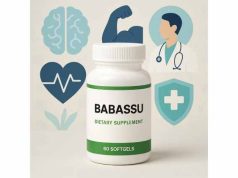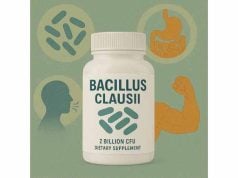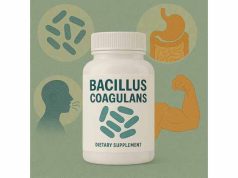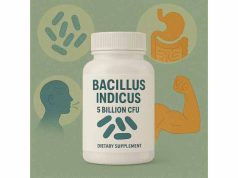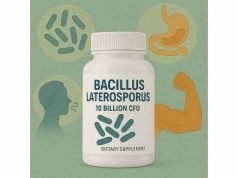Are you curious why basil seeds—sometimes called “Sabja seeds” or “Tukmaria”—are gaining popularity in wellness circles? These tiny black seeds, harvested from the sweet basil plant (Ocimum basilicum), deliver a big punch in nutrition, hydration, and traditional remedies. Basil seeds are prized for their fiber, prebiotics, essential minerals, and unique ability to swell in water, offering digestive, metabolic, and cooling benefits. Modern research explores their role in supporting healthy blood sugar, appetite control, and gut health. If you’re looking for a versatile superfood, basil seeds are easy to add to drinks, smoothies, and snacks. This guide breaks down the origins, science, key benefits, how to use, safety, dosage, and the most frequently asked questions—so you can decide if basil seed belongs in your wellness routine.
Key Takeaways
- Basil seeds are rich in fiber, omega-3s, calcium, and plant compounds, supporting digestion, hydration, and heart health.
- They expand rapidly in water, forming a gel that may promote fullness and stabilize blood sugar levels.
- Typically consumed soaked, basil seeds are easy to add to beverages, puddings, and healthy recipes.
- Most people tolerate basil seeds well, but caution is advised for those with swallowing difficulties or allergies.
- Dosage usually ranges from 1–2 teaspoons (about 2–5 grams) daily, with higher intakes best discussed with a health professional.
Table of Contents
- Basil Seed Introduction, Nutritional Profile, and Traditional Uses
- How Basil Seed Works: Digestive Gel Formation and Biological Actions
- Evidence-Based Health Benefits of Basil Seed
- Safety Considerations, Side Effects, and Precautions with Basil Seed
- Recommended Dosage and Best Ways to Use Basil Seed
- Basil Seed Frequently Asked Questions (FAQ)
Basil Seed Introduction, Nutritional Profile, and Traditional Uses
Basil seeds, sometimes known as Sabja or Tukmaria, are the edible black seeds of the sweet basil plant, Ocimum basilicum. Unlike chia seeds, which they often resemble, basil seeds have a centuries-old history in Southeast Asian, Indian, and Middle Eastern cultures, where they’ve long been used in cooling drinks, desserts, and Ayurvedic remedies.
Botanical Overview and Origin
- Ocimum basilicum is an aromatic annual herb native to tropical regions of Asia and Africa, cultivated worldwide for its culinary leaves and seeds.
- Basil seeds are harvested once the basil plant flowers and sets seeds, usually in the late summer or early autumn.
Physical and Sensory Qualities
- Appearance: Small, oval, jet black, similar in size to chia.
- Texture: When soaked, basil seeds absorb up to 20–30 times their weight in water, forming a translucent, gel-like coating with a mild, neutral taste.
- Culinary Role: Used in Indian falooda, rose milk, Thai drinks, sherbets, and even vegan puddings.
Nutritional Profile of Basil Seeds
These seeds pack impressive nutrition into a tiny package:
- High Fiber: 40–60% of the seed is dietary fiber, mostly soluble, promoting digestive health and regularity.
- Omega-3 Fatty Acids: Alpha-linolenic acid (ALA), a plant-based omega-3, supports heart and brain health.
- Minerals: Rich in calcium, magnesium, iron, and potassium for bone strength, muscle function, and energy metabolism.
- Plant Compounds: Polyphenols and flavonoids, natural antioxidants, help protect cells from oxidative stress.
- Protein: About 10–20% by weight, higher than most other small seeds.
Traditional and Modern Uses
- Ayurvedic and Traditional Chinese Medicine: Used to cool the body, ease digestive discomfort, reduce bloating, and calm the mind.
- Hydration: The seeds’ ability to swell and retain water makes them a favorite in hot climates to help prevent dehydration.
- Culinary: Featured in sweet drinks (like falooda), fruit beverages, yogurt parfaits, smoothies, and homemade jams.
How Basil Seeds Compare to Chia and Flax
- Both basil and chia seeds form a gel, but basil seeds expand faster and have a more neutral flavor.
- Basil seeds contain less fat than chia or flax but deliver more calcium and iron.
- They are allergy-friendly, gluten-free, and suitable for vegan and paleo diets.
Summary Table: Basil Seed Nutrients (per 5 grams, about 1 tsp)
| Nutrient | Approximate Amount |
|---|---|
| Fiber | 2–3 grams |
| Omega-3 (ALA) | 500–700 mg |
| Protein | 1–1.5 grams |
| Calcium | 60–80 mg |
| Iron | 1–2 mg |
| Calories | 20–25 kcal |
Practical Tips for Getting Started
- Always soak basil seeds in water (or any liquid) for 10–15 minutes before use—they are not typically eaten dry.
- Use as a topping for fruit, in dairy-free “puddings,” or to thicken healthy drinks and desserts.
- Store in a cool, dry place to preserve freshness.
Basil seeds combine time-tested tradition with modern wellness trends, offering versatile ways to boost your daily nutrition naturally.
How Basil Seed Works: Digestive Gel Formation and Biological Actions
Basil seeds are more than just a trending superfood—they’re a fascinating example of how nature packages health benefits in small, unassuming forms. The unique way basil seeds work in your body stems from their structure and their interaction with water.
Hydration and Gel Formation: The Science
- When soaked, basil seeds’ outer shell swells quickly, forming a mucilaginous (gel-like) layer. This gel is mostly soluble fiber.
- The mucilage helps slow gastric emptying—the rate at which food leaves your stomach—which can promote a feeling of fullness and steady blood sugar release.
- The expanded seeds, combined with water, help keep you hydrated and support digestive regularity.
Digestive Benefits and Gut Health
- The high soluble fiber content acts as a prebiotic, feeding beneficial gut bacteria.
- The gel traps carbohydrates and sugars, slowing their absorption, which may benefit those seeking stable energy or blood sugar control.
- Bulking action of fiber helps move waste efficiently through the intestines, easing constipation and improving stool consistency.
Plant Compounds: Antioxidants and Anti-Inflammatory Effects
- Basil seeds contain polyphenols, including orientin and vicenin, shown in lab studies to reduce free radical damage.
- Flavonoids and essential oils in the seed’s outer layer may help combat inflammation and oxidative stress.
- These effects support long-term wellness, immune defense, and cellular repair.
Metabolic and Cardiovascular Mechanisms
- The omega-3 ALA in basil seed oil may lower bad cholesterol (LDL), raise good cholesterol (HDL), and support healthy blood pressure.
- The calcium, magnesium, and potassium content aids in heart rhythm and vascular function.
Appetite Control and Satiety
- Consuming basil seeds before meals, especially as a drink, can promote satiety (a sense of fullness) due to the gel formation and delayed gastric emptying.
- This may naturally reduce calorie intake and support weight management goals.
Blood Sugar and Glycemic Support
- The gel matrix slows the breakdown and absorption of carbohydrates, resulting in a gentler rise in blood sugar after meals.
- Early studies in humans and animals suggest basil seed consumption may benefit those with prediabetes or mild type 2 diabetes—though it should never replace prescribed treatment.
Hydrating and Cooling Properties
- In hot climates, basil seeds are celebrated for their ability to cool the body and support fluid balance, especially when consumed in summer drinks or sherbets.
Other Possible Actions
- Some traditional practitioners use basil seed for soothing sore throats, calming coughs, or even as a mild laxative or anti-inflammatory agent.
How to Maximize the Health Effects
- Always soak thoroughly—dry seeds can be a choking hazard and will not gel in your stomach.
- Combine with fruit, citrus juice, or herbal teas to boost nutrient absorption and flavor.
In summary, basil seeds support the body on multiple levels: digestive, metabolic, cardiovascular, and cellular—thanks to their fiber, phytonutrients, and unique gelling properties.
Evidence-Based Health Benefits of Basil Seed
Basil seeds offer a compelling mix of traditional and modern, research-backed benefits that make them a functional addition to today’s diet. Let’s explore the main evidence-supported health advantages and how they can fit into your wellness plan.
1. Digestive Health and Regularity
- The soluble fiber in basil seeds adds bulk and moisture to stool, promoting easier, more regular bowel movements.
- Many people find relief from mild constipation or sluggish digestion by adding soaked basil seeds to their diet.
- Prebiotic fiber nourishes healthy gut bacteria, supporting a balanced microbiome.
2. Appetite and Weight Management
- Basil seed gel is highly filling, helping to curb appetite and reduce snacking between meals.
- Some studies report that people who consumed basil seed drinks before meals naturally ate less and felt fuller longer, supporting weight control efforts.
- As a low-calorie, nutrient-rich food, basil seed can be part of a healthy weight loss or maintenance plan.
3. Blood Sugar Regulation
- Clinical research and traditional use both highlight basil seed’s ability to slow carbohydrate absorption, contributing to better blood sugar control after meals.
- This effect is most pronounced when basil seed is used with meals containing refined carbs or sugars.
- For those with prediabetes or metabolic syndrome, adding basil seed to meals may help smooth out post-meal blood sugar spikes.
4. Heart and Vascular Health
- The presence of plant-based omega-3 (ALA), potassium, magnesium, and fiber makes basil seeds supportive of cardiovascular health.
- Regular use may help maintain healthy cholesterol and blood pressure levels.
- Antioxidants in basil seed further protect arteries from oxidative stress and inflammation.
5. Hydration and Electrolyte Support
- Soaked basil seeds are a powerful way to enhance hydration, especially in hot weather or after exercise.
- Their mineral content (especially potassium and magnesium) supports fluid balance, muscle function, and recovery.
6. Skin Health and Detoxification
- Traditional systems use basil seed drinks to clear heat and “toxins” from the body, supporting healthy, glowing skin.
- Hydrating effects, combined with antioxidants, may help reduce dryness or inflammation.
7. Cooling, Stress Relief, and Traditional Uses
- In Ayurveda and other healing systems, basil seed is used to calm the mind, cool the body, and relieve mild stress or heat-related symptoms.
- While not a replacement for medical care, many people find basil seed drinks soothing in summer or when feeling “overheated.”
How to Incorporate for Maximum Benefit
- Use basil seeds in breakfast parfaits, lemonades, coconut water, or vegan puddings.
- Combine with fruit or yogurt for balanced snacks.
Summary Table: Top Benefits of Basil Seed
| Health Benefit | How Basil Seed Supports It |
|---|---|
| Digestive Health | Bulking fiber, regularity, prebiotic action |
| Appetite/Weight | Satiety from gel, lower calorie intake |
| Blood Sugar | Slows absorption, smoother glycemic curve |
| Heart Health | Omega-3s, minerals, antioxidants |
| Hydration | Water retention, electrolyte support |
| Skin Health | Detox, hydration, antioxidants |
With regular, mindful use, basil seed delivers a spectrum of benefits, supporting everything from gut and heart to skin and hydration.
Safety Considerations, Side Effects, and Precautions with Basil Seed
Basil seed is generally considered safe and well-tolerated when consumed as part of food or beverages in moderate amounts. However, as with any concentrated supplement or health food, certain individuals may experience side effects or should exercise extra caution. Let’s explore the key safety concerns, possible interactions, and who should take special care with basil seed.
General Tolerability and Common Experiences
- Most people who add soaked basil seed to drinks or recipes experience no adverse reactions.
- Due to the high fiber and water absorption properties, basil seeds typically help rather than hinder digestion for healthy adults.
- In rare cases, eating dry (unsoaked) basil seeds can pose a choking hazard, especially in young children, the elderly, or anyone with swallowing difficulties.
Potential Side Effects
- Digestive Upset: Overconsumption (especially for those new to high-fiber foods) may cause bloating, mild cramping, or temporary changes in bowel habits, such as loose stools.
- Allergic Reactions: Although rare, those with known allergies to basil, chia, or related seeds may experience itching, rashes, or more severe reactions. If you have a history of food allergies, introduce basil seed with caution.
- Choking Hazard: Dry basil seeds swell quickly upon contact with moisture. Always pre-soak them for at least 10–15 minutes before consuming to avoid risks.
- Medication Interactions: Because basil seeds are rich in fiber and can slow digestion, they may theoretically reduce the absorption of certain oral medications if taken simultaneously. As a precaution, take medications at least 1 hour before or 2 hours after eating basil seeds.
Special Populations and Precautions
- Pregnancy and Breastfeeding: Basil seeds are commonly used in food traditions around the world, but concentrated medicinal doses should be avoided during pregnancy and breastfeeding due to a lack of safety research at high intakes.
- Children and Elderly: Only offer thoroughly soaked basil seeds to children or seniors, and monitor for any swallowing issues.
- Pre-existing Gastrointestinal Conditions: People with bowel obstruction, severe diverticulitis, or other digestive tract strictures should consult a healthcare provider before using basil seed.
Food Safety and Quality Tips
- Choose certified, food-grade basil seeds from reputable sources to avoid contamination with pesticides or impurities.
- Store seeds in a cool, dry, sealed container away from moisture to prevent spoilage.
Adverse Effects: When to Seek Help
- If you experience severe abdominal pain, swelling, allergic symptoms (like hives or difficulty breathing), or choking, seek prompt medical attention.
Summary: How to Use Basil Seeds Safely
- Always soak basil seeds in water before consuming.
- Start with small amounts (1 teaspoon) and gradually increase if desired.
- Drink plenty of water to support the fiber’s digestive benefits.
- If you take prescription medication or have chronic health issues, check with your doctor first.
By following these simple guidelines, most people can safely enjoy the unique nutritional and functional benefits of basil seed.
Recommended Dosage and Best Ways to Use Basil Seed
Basil seeds are a versatile superfood, but how much should you use, and what’s the best way to get their benefits? This section explores effective dosage ranges, ideal timing, preparation methods, and creative uses in daily meals.
Standard Dosage Guidelines
- For general wellness, digestive health, and appetite support, most people use 1–2 teaspoons (2–5 grams) of dry basil seed per day.
- In traditional Asian and Middle Eastern recipes, daily servings may reach 1 tablespoon (6–8 grams), but higher amounts should be introduced gradually.
- There’s currently no established “upper limit” for basil seed intake, but excessive amounts may cause digestive discomfort due to fiber content.
Best Practices for Preparation
- Always soak basil seeds before use. Add seeds to at least 10 times their volume in water (e.g., 1 teaspoon seeds in 100 ml water).
- Let stand for 10–15 minutes until a clear, jelly-like coating forms. Stir occasionally to prevent clumping.
- Strain off excess water if needed. The soaked seeds are now ready for use in recipes.
How to Use Basil Seed in Food and Drink
- Drinks: Add soaked basil seeds to lemonades, coconut water, smoothies, herbal teas, or homemade iced drinks for texture and nutritional boost.
- Puddings and Desserts: Layer with fruit, yogurt, or dairy-free milks for vegan puddings, parfaits, or breakfast bowls.
- Salads and Soups: Sprinkle as a garnish over salads, porridge, or soups for extra fiber and crunch.
- Baking: Mix into bread, muffins, or crackers for a nutritional upgrade.
Timing and Meal Ideas
- Before Meals: Consuming basil seed drinks 15–30 minutes before eating may help curb appetite and promote fullness.
- Hot Weather: Add to summer beverages for a cooling, hydrating effect.
Practical Dosage Table
| Purpose | Typical Daily Amount | Notes |
|---|---|---|
| General wellness | 1 tsp (2–3 g) | Add to drinks or snacks |
| Appetite/weight | 1–2 tsp (2–5 g) | Soak and consume before main meals |
| Digestive health | 1 tsp (2–3 g) | Increase water intake to aid digestion |
| Exercise/hydration | 1 tbsp (6–8 g) | Use in isotonic drinks post-exercise |
Tips for First-Time Users
- Start low and increase slowly to allow your gut to adjust to added fiber.
- Experiment with different liquids—water, fruit juice, plant milks, or coconut water.
- Store soaked basil seeds in the fridge for up to 2–3 days.
Who Should Adjust Dosage?
- People with sensitive digestive systems may want to begin with half a teaspoon.
- If using for appetite control, experiment with timing (pre-meal vs. between meals) for best results.
Can You Take Basil Seed Every Day?
- Yes, for most people, daily use is safe and beneficial—provided you stay within moderate serving sizes and listen to your body’s response.
Basil seeds are easy to incorporate into almost any diet, making them a convenient option for those seeking more fiber, plant omega-3s, and natural wellness support.
Basil Seed Frequently Asked Questions (FAQ)
What is the difference between basil seed and chia seed?
Basil seeds swell faster than chia seeds and have a more neutral taste. Both form a gel in water and are high in fiber, but basil seeds are higher in calcium and iron, while chia contains more omega-3 fatty acids.
Can you eat basil seed raw or dry?
It’s not recommended to eat basil seeds dry, as they can expand and pose a choking risk. Always soak them in water or another liquid for at least 10–15 minutes before consuming.
Are there any side effects of eating basil seed?
Most people tolerate basil seed well, but some may experience bloating or digestive upset if consuming large amounts or if new to high-fiber foods. Rarely, allergies can occur.
How much basil seed should I take daily?
A typical daily serving is 1–2 teaspoons (2–5 grams) of dry seeds, soaked before eating. Higher intakes should be introduced slowly, and excessive use may cause digestive discomfort.
Is basil seed safe for children and pregnant women?
Soaked basil seed is generally safe for children in small amounts, but not recommended for infants or very young children due to choking risk. Pregnant or breastfeeding women should stick to food-level use, not high-dose supplements.
Does basil seed interact with medications?
Because of its fiber content, basil seed may affect how certain medications are absorbed. Take medicines at least 1 hour before or 2 hours after basil seed, and consult your healthcare provider if you have concerns.
How do you use basil seed in recipes?
Soaked basil seed can be added to drinks, smoothies, puddings, yogurts, desserts, and salads. They’re especially popular in summer beverages for their cooling and hydrating properties.
Disclaimer:
This article is for educational purposes only and does not substitute for professional medical advice. Always consult your healthcare provider before starting any new supplement, especially if you are pregnant, nursing, have health conditions, or take medications.
If you found this article helpful, please consider sharing it on Facebook, X (formerly Twitter), or your favorite platform—and follow us for more wellness insights. Your support helps us create and share trusted, quality content for everyone. Thank you!



